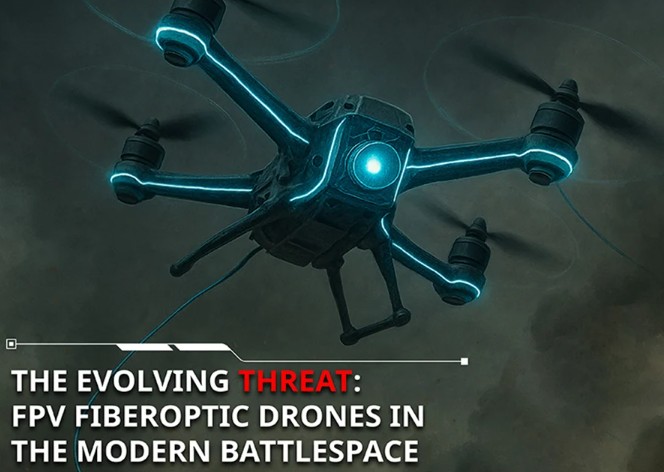An innovation challenge set by the NATO-Ukraine Joint Analysis, Training, and Education Center (JATEC), part of NATO’s Allied Command Transformation (ACT) has called for technological proposals to counter Russia’s use of fiber-optic cable controlled first-person view (FPV) attack drones, reports the Kyiv Post.
The topic was addressed at the NATO June 20th Innovation Challenge meeting in in Tallinn, Estonia.
According to the Ukrainian news source: “These unmanned aerial vehicles (UAV) are tethered to their operators by a fiber optic cable, typically between 5 and 20 kilometers (3 and 12.5 miles) long to provide its primary guidance and control system. These have presented a currently intractable challenge on the battlefield as, unlike free-flying drones, they are largely immune to conventional electronic jamming or other countermeasures.
“NATO ACT is the alliance’s lead agency for developing strategic warfare structures, capabilities and doctrine. As such it has, since 2017, issued twice annually a challenge to industry, academia and individuals to suggest cost-effective solutions to operational challenges faced by NATO nations. The challenges are sponsored by ACT and a member nation. The previous project co-sponsored by Poland, launched in March, called for proposals to counter Russian high-speed, precision-guided glide bombs. This resulted in the selection of three finalists from around 40 proposals – the TYTAN subsonic interception drone, the Alta Ares AI-based trajectory prediction program and the ATREYD autonomous drone wall (ATREYD). 2025’s second challenge, the 17th iteration, was the counter fiber-optic drone requirement sponsored by ACT, JATEC and Estonia. This set the requirement for a system that has a day and night detection range of at least 500 meters, weigh less than 100 kilograms (220 pounds) with a maximum cost of $100,000.
“This challenge saw an unprecedented 162 submissions – including 42 from Ukrainian stakeholders – which has since been reduced to a shortlist of 10 candidates for further practical trials.”
Currently Ukraine has had to rely on a system that tracks Russian fiber-optic drones by spotting the reflective fibers spooling out behind the drones and then tracing them back to their Russian operators. Images have appeared on social media showing dozens of used cables crisscrossing the battlefield which makes it impossible to trace their launch points.
Meanwhile, NATO reports trials mark a crucial step forward in developing advanced multi-layered air defence capabilities to support Ukraine. “These rigorous tests, a direct outcome of collaboration between France and NATO, focused on countering glide bombs to provide robust protection against evolving threats.
“The trials brought together a powerful alliance of international partners, including NATO Allied Command Transformation, the Joint Analysis, Training and Education Centre, the French Direction Générale de l’Armement, and vital Ukrainian representatives from the Ministry of Defence of Ukraine and the Armed Forces of Ukraine. This collaborative effort involved three key start-ups – Alta Ares, ATREYD, and TYTAN – each contributing components towards a holistic defensive solution. The entire process was notably accelerated through special procedures, reflecting the urgency of operational needs.
“Conducted at the Direction Générale de l’Armement‘s test ranges in France, the trials subjected various integrated systems to demanding conditions. Over several days, teams assessed advanced sensor systems, dynamic control technologies, and innovative engagement methods against simulated and real targets.”
For more information
https://www.act.nato.int/article/ukraine-support-counter-glide-bombs/
https://www.kyivpost.com/post/54446
(Image: NATO)




